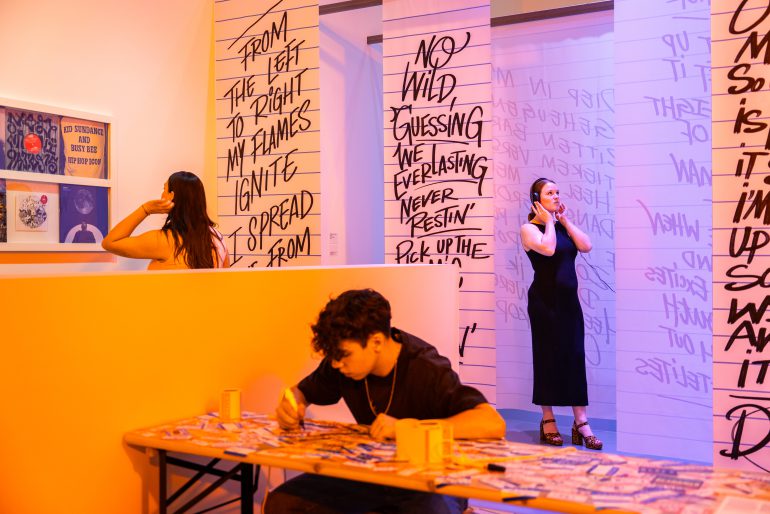‘HipHop culture could be about turntable skills, graffiti art, breaking or rapping; but it’s always about the people making it happen.’ This was once written on a flyer of an illegal HipHop party in Eindhoven. It symbolises the entrepreneurial spirit of this subculture that blew over from the United States in the early 1980s. Eindhoven’s raw, industrial character proved to be a fertile breeding groundfor this scene. Forty years later, HipHop has been absorbed into mainstream culture. The experimental exhibition Eindhoven: aHipHop story shows the influence of this subculture on the city’s identity, told from the community and the public itself.
HipHop and Eindhoven
Since the birth of HipHop, the culture has had a place in Eindhoven, where an underground movement emerged in the early 1980s. Eindhoven proved the ideal breeding ground forthe doityourself mentality and innovative nature of this community. MC Melodee (rapper, and performer): “HipHop had an appeal. Nobody said to me, ‘go do this’. You thought, ‘this iswhere I want to belong’. Without realising it, I belonged to a community with shared values.” Grndmxr CazOne (graffiti artist, breaker and DJ) adds: “HipHop is a feeling and a way of life: you don’t do HipHop, you are it.” Since then, four generations of creative makers, including dancers, rappers and graffiti artists, have been building the Eindhoven of today. HipHop’s defining role for the city’s identity is often underestimated. Eindhoven: a HipHop story lets visitors experience how this scene became part of Eindhoven’s DNA and put it on the map internationally.
Guest curators from the HipHop scene
Four guest curators curated the exhibition: Virgil ‘Skychief’ Dey (DJ and breaker, a.o. with worldfamous dance crew The Ruggeds), Stephan Cornelio Velema (breaker and filmmaker, a.o. of documentary Street Stars in Light City), Grndmxr CazOne (graffiti artist, breaker and DJ) and MC Melodee (rapper, entrepreneur and performer). Together with local artists from the HipHop scene, they depict the subculture in the 040 region through multidisciplinary work such as video, audio and VR. Velema: “HipHop has the power to transcend theindividual and bring people together, whether on the street or in a museum.” The subculture revolves around three key principles, which are also the starting point of the exhibition. Dey: “First of all, respect is the basis of the movement. Next, selfexpression and innovation are closely intertwined, something that often stems from the experience of oppression. Finally, HipHop emphasises the importance of belonging and community; a collective identity.”
Labyrinth
Visitors to Eindhoven: a HipHop story step into a labyrinth. This setup symbolises the world of subculture: there is no single beaten path that the creators in this scene take, more often it is a complex route they have created themselves. The maze leads the audience to the heart of the exhibition. That central meeting place symbolises the four elements of HipHop: DJing, mc’ing, breaking and graffiti. The exhibition invites visitors to participate. Because engaging in a creative process together, inspiring others and passing on your knowledge and skills, that is HipHop. They imagine themselves in the head of a rapper while thinking up a song, they enter an illegal HipHop party through VR glasses and an innovative breakdance installation invites them to dance.
HipHop and the Van Abbemuseum
In recent years, HipHop culture became known to a wider public and was institutionalised by policymakers. Despite this, the HipHop scene is underrepresented in the Van Abbemuseum. With the exhibition Eindhoven: a HipHop story, the museum gives the street culture, which is such a determining factor in shaping the city, a bigger stage for the firsttime. Through sustainable cooperation with this community, the diverse lifeworlds and experiences of HipHop culture are given a permanent place in the museum. Eindhoven: a HipHop story is a collaboration between EMOVES and the Van Abbemuseum.
From 21 June to 8 December 2024
www.vanabbemuseum.nl
